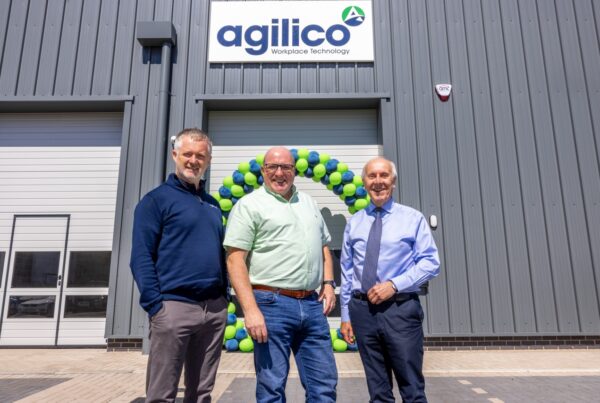Just when everyone starts to get their head around the impact of multi-channel customer interactions, advances in technology make new and innovative ideas possible and retail is often the frontrunner for the adoption of new technologies.
A handful of major retailers have started to experiment with new and innovative ways to draw customers into physical stores to interact with their products or services. Technology is often at the heart of these new experiences, whether a company is simply taking a step closer to integrating between different channels or going beyond to experiment with new technology to provide customers with that wow-factor experience that is likely to give them a competitive edge over high-street rivals.
Recent examples have included creative uses of augmented reality (AR) in providing another dimension to the sales process. There is potential for AR to provide new and interactive experiences to customers in-store. For example, Lego introduced a series of kiosks that feature AR, so that when a shopper holds up a box of the kit they are intending to buy, the kiosk displays the completed model as if it were in their hands in front of them.
Clothing store Uniqlo has also incorporated AR technology into its retail space and has placed LCD screens within store mirrors, essentially creating an augmented fitting room that allows shoppers to see what they look like in the clothes ’virtually’, without actually having to physically try on any of the clothes.
Not only are these retailers offering something unique to their customers in the form of an experience that they can’t get anywhere else, they’re also encouraging shoppers to spend more time in their stores and interact with products on multiple levels.
Yet the latest talk is around how virtual reality (VR) will be next to really shake up the experience retailers will be able to offer their customers in the future, fuelled by a number of impressive launches in the virtual reality space over the last couple of years.
While originally intended as a way to experience truly immersive gaming, ideas are already churning around how virtual reality can be used for different applications, particularly to enhance the retail sector. The exciting news is that consumer level kits are already available, with prices going down rapidly.
If you think beyond the interactive gaming experiences already possible with VR technology, then virtual reality has the potential to create even wilder and more technically interesting experiences for customers. There is the potential for truly immersive retail experiences where customers can interact in a fully virtual retail space, potentially experiencing it as if they’re walking around it, with a full 360- degree virtual experience. In turn, this could lead to the launch of entirely new store formats altogether.
VR also has the potential to shake-up the product design process by re-creating virtual versions of products not yet manufactured, giving companies a clearer sense of what the customer will experience before waiting for the first prototype to come off the production line, speeding up design revisions and potentially spotting flaws before a product is made. Similarly, using VR, retailers are able to test out new store layouts and installations before printing and production takes place.
By bridging the gap between the online and in-store retail experience currently available, VR has the potential to increase ecommerce revenue and deliver a pseudo-real experience one step on from the augmented reality (AR) experiences that are already possible.
With the opportunities made possible by technology, it’s an exciting time for those working in the retail and customer experience sectors. While it’s never clear exactly what impact new technology will have, or which innovations stand the test over time, what is quickly becoming clear is that the customer experience of tomorrow will be very different, and virtual experiences that deliver real impact are unlikely to be as far off as you might http://www.eta-i.org/valium.html have thought.
The power of consistency
A well-oiled machine is made up of different parts, all successfully working together, for one common purpose. Every part has a job to do, and every job exists to enable the machine to function to its best ability. Think about your business for a moment. How would you describe it? Is it a well-oiled machine?
To achieve smooth operation, every organisation, no matter the size, must rely on some standardisation of processes. And like any machine, every organisation also requires fuel to power the engine. In today’s economy, that fuel is information.
It goes without saying that the management of information needs to be carefully controlled and regulated – a task that begins with a trained and structured workforce. Without the appropriate processes and protocols in place however, employees may strive to make up for it by managing information in their own way. Not only can this cause a slowdown in productivity and lead to wasted time, but disorder, over-complexity and mistrust can breed and your machine could come to a halt.
The issue is a complicated one and unfortunately, these types of scenarios are common enough to be worrying. Recent research has found that over half of all office workers do not believe that their companies have well organised storage systems and a quarter criticise them for being overly cumbersome to use. It appears that the well-oiled machine, with its trained workforce and standardised processes is falling foul of over-complication. Unsurprisingly, the effects of this breakdown hit at the heart of the business engine: productivity.
But why is this happening? There appear to be a myriad of different reasons, but in reality these are all connected to one: a lack of process. Put simply the biggest difficulties office workers face when it comes to productivity are all easily solvable. Problems locating historical documents; irregular methods of saving files, and a lack of consistency in format (paper vs digital), can all be corrected with one simple action: standardisation of processes.
It sounds so straightforward – and it is. Unfortunately however, it isn’t always enough. Very often, even existing practices for the management of information can be ignored. For example, in emerging markets, over a third of employees don’t trust their company’s central systems. They then invariably substitute personal storage systems in place of centralised storage, leading to inefficiencies. In fact, 41 per cent of employees store documents on personal devices, a practice that’s both a productivity and security nightmare.
For any business, losing control of where employees are storing information sets a dangerous precedent. The net result is almost always lost time and money for the business: 25 minutes for every worker a day to be specific. But by implementing – and enforcing — standardised working practices, organisations can claim more control over how their information is managed by employees.
The best way to achieve this is coherence and simplicity. For rules and standards to be adhered to, they have to be consistent, uncomplicated and clear-cut. In this way, haphazard attitudes to saving and storing data will be quelled.
In order to transform an organisation into a hive of productivity, every employee that is sharing or managing data needs to do so in a standard and consistent way. For your business machine to run at optimum efficiency, the different parts all need to be fully connected and working together. If they stop collaborating, or if one part steps out of sync with the others, the bottom line will suffer. Over half of workers already recognise that poor organisation and lack of standardised processes is negatively impacting their ability to serve customers. It is this knowledge which should form the foundations of implementing proper standards and rules, to guarantee a truly information-fuelled and well-oiled machine.
Blog originally from Canon Business Bytes
A version of this article originally appeared on Information Age.



